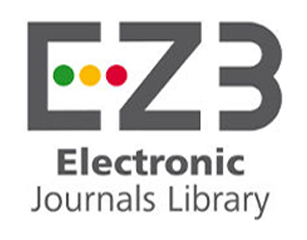ANALYSIS OF THE PUBLIC REGULATION ISSUES IN IMPLEMENTING MECHANISMS TO FIGHT MONEY LAUNDERING: INTERNATIONAL AND DOMESTIC EXPERIENCES
Keywords:
development analysis, state regulation of anti-money laundering, United States of America, legislative regulationAbstract
The article analyses the main stages of the state regulation formation processes that counteract the laundering of funds obtained by criminal means. In 1970, the United States of America (US) started the active fight against the laundering of “dirty” funds. It is proved that the US has the richest experience in counteracting the legalisation (laundering) of the proceeds of crime. In fact, state mechanisms to combat the legalisation of criminal incomes have been established long before the first Anti-Money Laundering (AML) legislations were adopted. The conducted analysis allowed this article to distinguish four key stages of money laundering: The emergence of activities related to laundering of criminal proceeds; Broad money laundering activities of organised crime; the emergence of the concept of “money laundering”; legislative regulation of this problem.
The analysis of the legislation of foreign countries made it possible to identify problematic issues of a national character, that the effectiveness of counteraction to this dangerous phenomenon depends on their solution. In turn, it outlines a number of measures that should contribute to this: exchange of foreign currency should be carried out in accordance with clear rules; an electronic money transfer archive must be created; creation of mechanisms for monitoring compliance with international accounting standards; constant exchange of information between special units; continuous updating of information and carrying out of special researches on “money laundering”; adoption of international and national legal acts; creation and implementation of international anti-money laundering programs; introduction of obligations to transfer information to special bodies; strict adherence by individual countries of international standards in the area of combating money laundering; creation and expansion of training programs for the relevant banking professionals, law enforcement agencies, etc.; disclosure of information on the “black” list of countries that indulge in “laundering” of money in their territory.
It was emphasized that the issue of control in executive bodies existed and exists in all countries, but has different ways of resolving it. This requires the formation of a new understanding of the system of state financial control, as well as a rethinking of the forms of its implementation, in modern conditions.
References
A brief history of money laundering [Electronic resource]. — Access mode: http://www.countermoneylaundering.com/public/?q=node/6
Гуревич А. Я. Средневековый купец / А. Я. Гуревич. — М. : Наука, 1990. — С. 101.
Копелев Д. Н. Золотая эпоха морс- кого разбоя. Пираты. Флибустьеры. Корсары / Д. Копелев. — М. : Ос- тожье, 1997. — С. 7.
Київець О. В. Міжнародно-право- ве регулювання боротьби з відми- ванням “брудних” грошей: дис. ... канд. юрид. наук: спец. 12.00.11 / НАН України ; Ін-т держави і права ім. В. М. Корецького. — К., 2003.
Євразійська група [Електронний ресурс]. — Режим доступу: http://www.sdfm.gov.ua/articles.php?cat_id=101&lang=uk (11.05.2012). — Назва з екрану.











